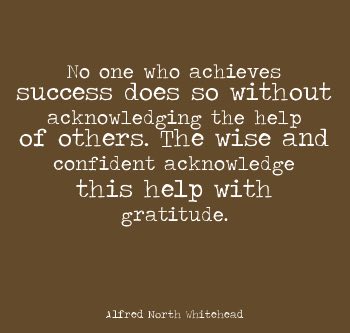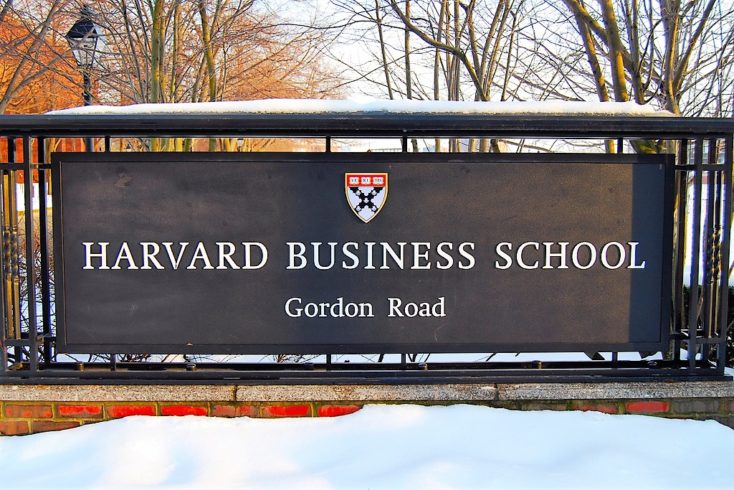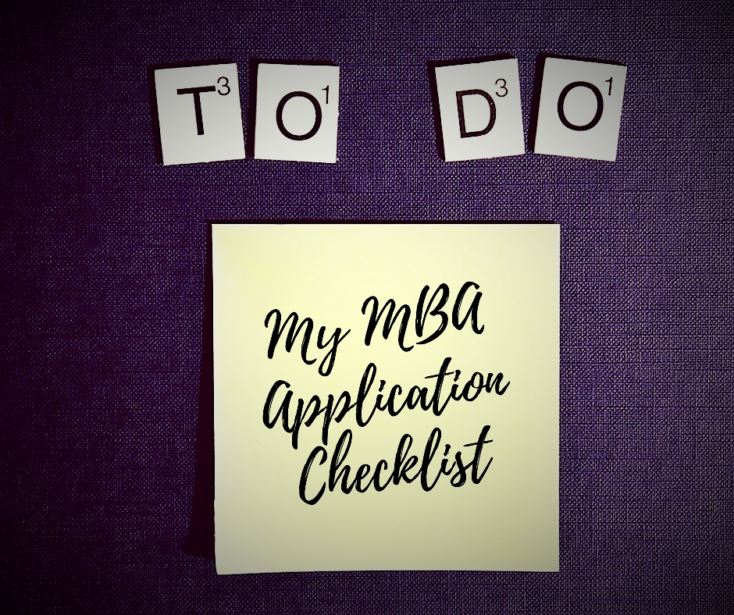Forum Home > GMAT > Quantitative > Problem Solving (PS)
Events & Promotions
| Last visit was: 27 Jul 2024, 05:55 |
It is currently 27 Jul 2024, 05:55 |

Customized
for You
Track
Your Progress
Practice
Pays
09:55 AM PDT
-11:00 AM PDT
08:00 PM PDT
-09:00 PM PDT
05:55 AM PDT
-12:30 PM PDT
07:00 PM IST
-08:00 PM IST
09:00 PM IST
-10:00 PM IST
| FROM Stacy Blackman Consulting Blog: B-Schooled Episode #30: Conveying Program Knowledge and Fit |
 This episode covers a quick admissions update from Harvard Business School, before diving into why it’s important for you to demonstrate your knowledge of and fit with the MBA programs you’re applying to—and how you can do so in both your written materials and your interview responses. Listen to B-Schooled episode #30 here, or on any of the podcast apps listed below. B-Schooled is available on most major podcast apps, including: Apple Podcasts Spotify Stitcher TuneIn Please be sure to subscribe to B-Schooled so that you don’t miss a thing. If there’s something you’d like for us to cover in a future episode, please email podcast@stacyblackman.com. We’d love to hear from you! The post B-Schooled Episode #30: Conveying Program Knowledge and Fit appeared first on Stacy Blackman Consulting - MBA Admissions Consulting. |
| FROM Stacy Blackman Consulting Blog: The MBA School Selection Process |
|
[img]https://www.stacyblackman.com/wp-content/uploads/hand-person-girl-woman-photography-thinking-831770-pxhere.com_-734x491.jpg[/img] The school selection process is one of the most important decisions you’ll make when considering an MBA degree. Whether you aim for Round 2 (or 3) this season or are laying the foundation for a future application cycle, give ample consideration regarding which programs will dominate your waking thoughts over the coming months. The MBA application process takes up a huge amount of time and effort. Most candidates feel overwhelmed with applying to more than the average of four or five schools. Therefore, it’s crucial to think strategically about school selection and develop a competitive mix of MBA programs to target. Dream or “Reach” Business Schools The majority of candidates who apply to the leading business schools are bright, personable overachievers. They would be an asset to any program. However, each year we see excellent candidates prematurely take themselves out of the running for some of the top schools. Certain programs, such as [url=https://www.stacyblackman.com/mba-application-advice/stanford-graduate-school-of-business/]Stanford GSB[/url] and [url=https://www.stacyblackman.com/mba-application-advice/upenn-wharton/]Wharton[/url], have single-digit acceptance rates. Literally, thousands of highly qualified applicants get turned down each year. But if you don’t even give yourself a chance at admission, you may always wonder, “What if…” Is there anything worse? B-school is an ambitious dream. So, shoot for the stars, or you might regret not trying. While the process is extremely competitive, you shouldn’t count yourself out before the game even begins. That’s why we recommend people ask themselves the following questions. Is getting an MBA degree your top goal? Or, is getting an MBA from a specific school what really matters most? If you’d truly feel at peace with never getting an MBA if you didn’t get into School X, then you can move forward by focusing all of your efforts solely on your dream school or schools. A word of advice, though. If your test scores are much lower than the average at your dream school, [url=https://blogs.haas.berkeley.edu/the-berkeley-mba/should-i-retake-the-gmat]give the GMAT or GRE another shot[/url]. Also, start thinking about explaining your academic weaknesses and highlighting the unique strengths you would bring to the classroom setting. In any case, come decision time, it’s important to remain realistic. [img]https://www.stacyblackman.com/wp-content/uploads/writing-pencil-creative-light-technology-thinking-714869-pxhere.com_-734x491.jpg[/img] Target Schools An acceptance to Harvard Business School or Wharton would thrill almost any applicant. But you’re going to have to balance what school you want to attend with where you can actually get in. Start with the hard data points. As a general guideline, take a look at MBA programs you like where your profile falls within the top 10 percent of admitted students. Compare your undergraduate GPA, GMAT/GRE score, years of work experience, and industry with accepted applicants reported by the school on their class profile page. If your industry is underrepresented, consider that an advantage for your application. Research the schools, make sure you know what’s important to you, and figure out which ones fit well for you. Remember the Golden Rule of MBA admissions—only apply to schools you would be thrilled to attend. If you work in an industry that typically makes up a bigger portion of the applicant pool, such as investment banking or consulting, make sure within your application that you think beyond your obvious achievements and differentiate yourself through your essays and interviews by picking memorable and unique stories and experiences. Safety Schools Safety schools don’t mean bad or less desirable schools—they’re simply a more obvious fit with your numbers and profile. A good way to determine whether your list should include safety schools is by asking yourself how important it is for you to go to business school next year. Maybe you have a compelling reason you need to exit your job and make a move to grad school ASAP. If so, including safety schools among your targets is a smart strategy. If the need is immediate, then definitely include a range of schools of varying degrees of competitiveness. The application pool fluctuates each year and all you need is one admit. So, spread some risk around! It’s important to stay pragmatic and align your expectations with the MBA programs that match your particular profile. This is doubly true if your GMAT score isn’t through the roof or your career trajectory has stalled out. Remember, though, you’re still not guaranteed an offer of admission. When your school selection includes “safety” options, that merely means your chances are far greater than at a program with an acceptance rate of 15 percent or lower. In the end, we can’t overemphasize how important it is to really be yourself in your application. That’s the best way to find the school that is right for you. Contrary to popular belief, it’s not uncommon to be admitted into a more highly-ranked program and denied by a seemingly less competitive one. That’s because the MBA admissions process is not only about numbers – it’s about numbers and experiences and personalities and fit. The post [url=https://www.stacyblackman.com/blog/school-selection-mba-program/]The MBA School Selection Process[/url] appeared first on [url=https://www.stacyblackman.com]Stacy Blackman Consulting - MBA Admissions Consulting[/url]. [img]https://feeds.feedburner.com/~r/StacyBlackman/~4/zNSvKsaXn-A[/img] |
| FROM Stacy Blackman Consulting Blog: Showing Gratitude This Thanksgiving |
 It’s Thanksgiving week in the United States, and on Thursday, millions of people will take a break to reflect on everything they have to be grateful for, even in the midst of a global pandemic and all-around rough year. It’s a good time for MBA hopefuls to do the same. If you applied to schools in Round 1, you’re getting close to learning the final results of your efforts. Before you do, you should make a point of circling back with everyone who helped you along the way. Sure, you’ll check in with them again to let them know where you’re going to end up. But it’s nice to thank people now. That way, it doesn’t seem like you’re only grateful for their help because you got into a certain school. Think back to when you first downloaded your applications. Make a list of those who played a role in ensuring you felt confident once you hit “submit.” Your recommenders, your friends and family members who proofread your materials or gave you great advice, your co-workers who helped calm your nerves—everyone who’s supported you. We’re sure they’d appreciate a quick note of thanks. If you’re currently in the midst of interviewing, remember to shoot a short thank-you email or letter to your interviewers, too! Don’t be discouraged or worried if you don’t hear back, though; some schools have policies about interviewers responding to candidates before final decisions are out. But we know they’ll be impressed by the gesture nonetheless. What if you’re working to hit Round 2 deadlines? It’s still appropriate to thank those who have been helping you so far — especially your recommenders, who may be taking time away from their families to work on your letters over the holidays. Remember:  From all of us to all of you: Happy Thanksgiving, and thank YOU for reading our blog. If you find yourself with some extra time over the long holiday weekend, catch up with our B-Schooled podcast, which has new episodes every Wednesday covering just about every aspect of the MBA admissions process. You can find it on Apple Podcasts, Spotify, Stitcher, or TuneIn. Until next time, The team at Stacy Blackman Consulting The post Showing Gratitude This Thanksgiving appeared first on Stacy Blackman Consulting - MBA Admissions Consulting. |
| FROM Stacy Blackman Consulting Blog: B-Schooled Episode #31: Tips for Trimming Essays, Application Responses |
 As any MBA hopeful knows, oftentimes it’s quite a challenge to fit an application, data-form, or essay response into the space provided when restrictive character or word counts are in play. This episode of the B-Schooled podcast focuses on specific ways MBA applicants can edit down essays and short-answer responses without compromising the power of their stories, anecdotes, or statements. Listen to B-Schooled episode #31 here, or on any of the podcast apps listed below. B-Schooled is available on most major podcast apps, including: Apple Podcasts Spotify Stitcher TuneIn Please be sure to subscribe to B-Schooled so that you don’t miss a thing. If there’s something you’d like for us to cover in a future episode, please email podcast@stacyblackman.com. We’d love to hear from you! The post B-Schooled Episode #31: Tips for Trimming Essays, Application Responses appeared first on Stacy Blackman Consulting - MBA Admissions Consulting. |
| FROM Stacy Blackman Consulting Blog: 4 Tips to Stand Out While Working Remotely |
 “Fresh Ideas From the Blacklight” SBC’s Weekly Newsletter for Professionals You know the saying, “Out of sight, out of mind”? If you’re currently working remotely, do not let that happen to you. These are scary economic times, with unemployment in the U.S. approaching Great Depression-era levels. In this uncertain landscape, make sure your supervisor knows that you are still just as productive and dedicated to your job as you were pre-quarantine. The key, explains author and time management coach Elizabeth Grace Saunders, is making yourself and your accomplishments more visible to your organization. Saunders recently shared these five tips in Harvard Business Review. Tip #1 Do Your Work We’re several months into this whole working from home thing. That means we no longer have many valid excuses for slacking on the job. If your organization needs to make some tough decisions about who to keep around, your performance suddenly matters—a lot. So, time to ramp up your productivity. Accept new assignments with enthusiasm. Aim to deliver ahead of the deadline, if possible. At this point, managers now expect higher standards of output, Saunders says.  “If you haven’t done so already, put a system in place for keeping track of your tasks and ticking them off, even if your schedule is modified because you have other responsibilities at home,” she suggests. Tip #2 Toot Your Own Horn One way to ensure your manager remembers your value is by regularly updating her or him with your latest accomplishments. Many workplace cultures value results-based models to gauge employee accountability. To that end, share a weekly recap with your boss that focuses on progress made and quantifies performance whenever possible. You don’t want to come off as a braggart, of course. Be judicious about what you share, and always highlight the efforts of the team. The goal, explains Saunders, is making sure your boss knows you’re doing great things, even though they can’t observe your efforts in person. Tip #3 Help Your Boss Now more than ever, your boss may need a helping hand but feel reluctant to ask. Due to the pandemic, they may have to juggle homeschooling their children or caring for elderly parents. While you shouldn’t take on extra tasks if it means burnout for you, know that stepping up in ways that make your boss’s life easier can make you an even greater asset to the organization.  Offer to help with extra assignments or take work entirely off of your manager’s plate, Saunders suggests. “This shows that you’re not only someone who gets their work done but also someone who takes initiative.” Tip #4 Be a Team Player Strong communication and interpersonal skills are as vital as ever when working remotely. If problems arise, find a solution on your own. Or, at the very least, see how you can help before bringing it up with your supervisor. When the issue is with another colleague, take steps to work things out together if possible, and avoid escalating the problem to involve management. “During this time, you not only want to be seen as a valuable individual contributor, but also as someone who elevates the entire team,” Saunders says. “Taking this approach to conflict shows that you have the capability to communicate and collaborate.” Otherwise, your boss may hesitate to put you on a team for fear you won’t play well with others. Tip #5 Spread Positivity Between anxiety over COVID-19, the threat of economic collapse, and fights at Starbucks over mask-wearing, there’s a lot of negativity in the air lately. One unexpected casualty of social distancing has been a lack of laughter in our day. That’s why Saunders urges employees to inject more humor and positive energy to their virtual communications.  Kick off meetings by chatting about something funny you saw or a book you’re reading. Adding a social element goes a long way toward replicating the comradery of face-to-face encounters. “Laughter and positive energy draw teams together and make people feel good about being around you,” Saunders says. In the end, all your efforts to stay busy and positive while working remotely may not save you from a layoff. But, she adds, “it does increase your odds because you’re demonstrating your value to the organization and the people around you.” *** Did you enjoy this post with tips for standing out while working from home? It originally appeared on the Blacklight, our weekly newsletter for professionals. At the Blacklight, we aim to illuminate with every dispatch that lands in your inbox. If you’re thirsty for guidance to help you slay it at work or as a student and move your goalposts closer, sign up today! The post 4 Tips to Stand Out While Working Remotely appeared first on Stacy Blackman Consulting - MBA Admissions Consulting. |
| FROM Stacy Blackman Consulting Blog: B-Schooled Episode #32: What Do You Bring to an MBA Program? |
 In order to claim a spot at your dream school, it’s critical that you find a way to let the admissions committee know what your classmates will learn from you and how you’ll be an asset to their program. However, since most schools don’t come right out and ask you to address what you’ll bring to the school’s community, you need to find a way to convey that information throughout your materials. This episode covers ways to communicate the knowledge, experience, soft skills, and interests you’ll contribute to class discussions and be able to bond over with fellow students. Listen to B-Schooled episode #32 here, or on any of the podcast apps listed below. B-Schooled is available on most major podcast apps, including: Apple Podcasts Spotify Stitcher TuneIn Please be sure to subscribe to B-Schooled so that you don’t miss a thing. If there’s something you’d like for us to cover in a future episode, please email podcast@stacyblackman.com. We’d love to hear from you! The post B-Schooled Episode #32: What Do You Bring to an MBA Program? appeared first on Stacy Blackman Consulting - MBA Admissions Consulting. |
| FROM Stacy Blackman Consulting Blog: Round 2 at HBS is Almost Here |
 Is your MBA application for Round 2 at HBS as strong as it can be? The deadline is coming up on January 5, 2021. That means there’s no time like the present to review some key elements your Harvard Business School application should highlight. Unsurprisingly, high-impact leadership is the “Big Kahuna” at HBS. Meaning, it’s the essential trait the AdCom wants to see. When evaluating your leadership potential, the admissions committee will look for evidence that you’ve made a positive impact on the communities of which you’ve been a part, both personally and professionally. Are You a Leader? Your past leadership achievements are the best gauge of your potential for realizing your future ambitions, so make sure to highlight instances that support your case in this area. The admissions committee understands you may not have several years of work experience from which to draw. Take comfort in knowing that it’s not about the scale of your achievements. Instead, it’s the fact that you left indelible footprints. How Have You Made the World a Better Place? Be sure also to focus on service to others in your application. As with leadership, the committee is concerned with the connection between your achievements and how they reflect who you are. Community service is vital for two reasons. First, because it provides insights into your deeper interests and the causes that you care about. Secondly, the admissions officers want to see evidence that you’re the type of person who devotes energy to making a community stronger. After all, they may be inviting you into their community.  With a mission to “educate leaders to make a difference in the world,” HBS isn’t looking for candidates who want a résumé boost. If you’re applying to Harvard, you have to have passion and vision—think big. Passion is a useful tool for staying motivated and productive, whether it’s in school or business. But it goes much deeper than simply being passionate about what you’re doing. You need to express your passion in a way that inspires and projects energy onto those with whom you work. It’s not just your footprints that interest HBS admissions. They also want to see the footprints of those who follow you as you blaze a new trail in an area of passion. Before You Submit in Round 2 at HBS Prospective applicants can take advantage of one of these upcoming webinars to learn more about HBS before this season’s final deadline.
*** If you need further proof that pursuing a Harvard MBA is the right path for you, check out this evergreen post from the HBS MBA Voices Blog. Do you need a second set of eyes to review your application before Round 2 at HBS? Work with a Stacy Blackman consultant on an hourly basis. The post Round 2 at HBS is Almost Here appeared first on Stacy Blackman Consulting - MBA Admissions Consulting. |
| FROM Stacy Blackman Consulting Blog: Year-End To-Do List for MBA Applicants |
 It’s early December—the home stretch for MBA hopefuls applying to business school in uber-competitive Round 2. With numerous deadlines hitting in early January, you’ll need to manage your time well throughout the holidays. Run through this To-Do List for MBA applicants and make sure you have every application component covered. Right now, prepping recommenders and drafting essays make up the two most important focus areas. Here’s what you need to do to stay on track and avoid becoming overwhelmed. #1 On the To-Do List for MBA Applicants: Recommender Management Great recommendation letters are one of the most critical pieces of your MBA application. They give the admissions team much-needed third-party insight to round out your essays and resume. By now your recommenders should know your hard deadlines. Current and recent supervisors make the best choices because they can speak to your present-day skills, values, and work ethic, as well as future potential. If you haven’t already, it’s time to remind them of the attributes you want them to highlight in their letter. Spell out precisely what you hope they will convey in their recommendation. MBA programs want to see examples of leadership, teamwork, and management potential. Additionally, you can make things easy for your recommender by providing a list of at least three strengths with supporting anecdotes. Remind your supervisor of your career goals as a reference. Your recommenders want to boost your admissions chances and will welcome the guidance. Encourage each of them to submit early if possible, so you can focus on the part of the application you need to deliver—the essays. #2 MBA Application Essays  Ideally, you should allow six weeks for this portion of the application. Many candidates find it helpful to start by writing rough drafts that go 50% or more above the required word count. While that seems like more work, it ultimately creates a better final product. The revision process helps you hone in on the best topics or anecdotes to support your overall application. Applicants from over-represented industries such as finance, information technology, engineering, or consulting should use the essays to focus on the aspects of your personal life that make you unique. Include hobbies, community service activities, passions and interests that make you stand out. Check out this essay tips post from admissions director Soojin Kwon at Michigan Ross School for inspiration. If you need extra insight about what the admissions committee is looking for at your target schools, consider using one of SBC’s strategy guides. These resources analyze the qualities that each school seeks and help applicants understand which stories to emphasize throughout their materials. Competition is fierce in Round 2, this year more than ever, according to the Wall Street Journal. Use this knowledge to fuel your commitment to your MBA applications and put together the best materials you can. The post Year-End To-Do List for MBA Applicants appeared first on Stacy Blackman Consulting - MBA Admissions Consulting. |
| FROM Stacy Blackman Consulting Blog: Top Ten Blog Posts-December 2020 Edition |
 Wondering which blog posts this year’s crop of MBA applicants visits the most on the Stacy Blackman Consulting site? We were, too! Thanks to modern technology—AKA Google analytics—you now have the news you need right at your fingertips. Without further ado… SBC’s top ten most-visited blog posts for the final quarter of 2020. Application Strategies Worth Noting CharacterPrevails: Stanford & Harvard Business School MBA Applications Have you heard of the term “double admits”? That’s what we call those singular applicants who receive admissions offers from both Harvard Business School and Stanford Graduate School of Business. We’ve worked with many top applicants this MBA admissions season who achieved this impressive feat—some with scholarships to boot. Here we analyze eight cases—and we have eight specific takeaways to share. Write a Winning MBA Personal Statement When it comes to the MBA personal statement, you need to think beyond your obvious achievements. Tell a compelling story if you hope to stand out amid the thousands of essays read by the admissions team each year.  What Makes a Great MBA Recommendation Letter The recommendation letter forms an integral part of your MBA application package and can make—or break—your chances of admission. Ideally, the MBA recommendation letter provides the admissions committee with a fresh perspective on your skill sets. Above all, your recommenders should enhance your application by offering new and valuable insights into you as a person. Blog Posts with Program-Specific Intel Harvard MBA Essay Tips for 2020-2021 Harvard Business School is using the same essay question as last year. According to MBA Admissions Director Chad Losee, “Amidst all the uncertainty globally, we plan to minimize changes in our application process this year.” The admissions committee understands that the COVID-19 pandemic has disrupted plans, employment, and personal lives. HBS 2+2 Program for College Seniors: How to Get In At SBC, our team includes the former HBS Associate Director of MBA Admissions who helped launch the 2+2 Program targeting college seniors. She explains that the program is all about getting the word out regarding what a graduate business degree can offer.  Face-Off: Oxford vs. Cambridge In SBC’s blog series Face-Off, we tease out the strengths and differences between two similarly ranked, or located, b-schools. Plus, we’ll highlight the unique elements of their admissions processes. Let’s start by looking at the differences between the Oxford MBA application versus that of the University of Cambridge Judge School of Business. Columbia MBA Essay Tips for 2020-2021 These Columbia MBA essay questions include a new question about leadership and your fit with the School. As one of SBC’s former CBS Admissions Officers shared, “With CBS, it really is a holistic approach, but the fit is VERY important. They want to know why CBS- that is a big part of their culture. They want to know you’re going to fit in.” MBA News You Can Use MBA Scholarship Trends at M7 Schools Business school is an expensive investment, and it’s never too early to start figuring out how you will pay for it. We have witnessed a substantial increase in financial incentives offered to admitted applicants we’ve worked with this past admissions season.  Investment Banking MBA Career Path Many professionals with their eyes on an investment banking MBA career path know that a degree from an elite business school can help them achieve that goal. Because the investment banking MBA career path is so popular, we’re sharing a Q&A with SBC consultant Puja, whose professional trajectory followed a similar route. Financial Times Announces 2020’s Global MBA Ranking The 2020 global MBA ranking announced by the Financial Times continued to show some volatility among the lower-ranked schools. However, the top ten remains well entrenched for another year. Looking ahead… We hope this roundup of blog posts serves as a helpful jumping-off point as you finalize your Round 2 applications or begin to prepare for your MBA application journey in 2021 and beyond. Image credit: Eric at Flickr (CC BY-ND 2.0) The post Top Ten Blog Posts-December 2020 Edition appeared first on Stacy Blackman Consulting - MBA Admissions Consulting. |
| FROM Stacy Blackman Consulting Blog: B-Schooled Episode #33: Avoid Oversharing with the AdCom |
 In this episode of B-Schooled, Erika is joined by her SBC colleague Lisa, former Director of MBA Admissions for the full-time and part-time MBA programs at Rice University’s Jones School. They’ll discuss when it is and isn’t a good idea to share deeply personal stories in your MBA essays or interview responses. While you want to present your authentic self across your materials, when it comes to writing about certain past struggles or traumas, there is a fine line between what will differentiate you and what might give admissions committees pause. Listen to B-Schooled episode #33 here, or on any of the podcast apps listed below. B-Schooled is available on most major podcast apps, including: Apple Podcasts Spotify Stitcher TuneIn Please be sure to subscribe to B-Schooled so that you don’t miss a thing. If there’s something you’d like for us to cover in a future episode, please email podcast@stacyblackman.com. We’d love to hear from you! The post B-Schooled Episode #33: Avoid Oversharing with the AdCom appeared first on Stacy Blackman Consulting - MBA Admissions Consulting. |
| FROM Stacy Blackman Consulting Blog: Stanford GSB’s Commitment to Diversity |
 You could say that 2020 has been a year of awakening on many fronts. Calls for racial and social justice —particularly in education— have become increasingly urgent. And the Stanford Graduate School of Business is at the forefront of elite business schools when it comes to taking action to create change. Stanford GSB’s commitment to diversity is evident in its newly released second annual Diversity, Equity, and Inclusion Report. Here are some of the highlights of the 2020 report. Increase Representation
Senior Associate Dean for Academic Affairs. You can learn more about the Stanford GSB’s commitment to diversity and read the full report by following the links above and below. (source: Stanford Graduate School of Business) The post Stanford GSB’s Commitment to Diversity appeared first on Stacy Blackman Consulting - MBA Admissions Consulting. |
| FROM Stacy Blackman Consulting Blog: Standardized Tests for Business School |
 The COVID-19 pandemic upended the business school admissions process in the spring. With lockdowns in place and testing centers closed, completing those standardized tests for business school became impossible. Therefore, some MBA programs announced they would not require standardized tests for business school admission for the 2020-2021 cycle. One such school, MIT’s Sloan School of Management, made the decision to provide a “level playing field” for all applicants, no matter how this pandemic has affected their lives. Meanwhile, the UV Darden School of Business also decided to pilot test waiver requests this year. “Standardized tests have always been just one indication of a student’s ability to succeed at Darden,” said Dawna Clarke, executive director of admissions. Keep in mind that this option is best for applicants with strong alternate indicators of academic, personal, or professional accomplishment. And even with the advent of online GMAT and GRE options, the experience wasn’t smooth for all. As one applicant remarked to the AdCom team at the Ross School of Business, “It’s hard to nail the GMAT when you’re concerned your internet might go out at any minute.”  Will this new flexibility regarding standardized tests for business school continue after the pandemic is behind us? Have we reached a point where elite MBA programs no longer consider the GMAT or GRE important for b-school admissions? Not likely. The Value of Standardized Tests for Business School SBC has seen a double-digit surge in demand for the top MBA programs in this application cycle. That will only continue as the global economy continues to struggle. As we shared with Find MBA, we believe top MBA programs will always prefer some type of standardized test. Case in point: although some international test centers remain closed, most elite MBA programs required a test score for Round 2. Lower-ranked schools, on the other hand, may become test-optional post-COVID-19. Such a move is a way of increasing MBA applicant volume and reducing barriers to entry. But, we don’t see this play out consistently even among the lower-ranked programs yet, as they are mindful of ranking requirements that usually include test scores.  Test scores may ultimately become even more critical at the elite level, given the competitive admissions process. However, we might see increased flexibility for replacements for the GMAT, such as the GRE and GMAC’s Executive Assessment (EA). At a meeting between the SBC team and Columbia Business School, the AdCom expressed support for the new EA tool. In the future, their program will track whether students with EA scores succeed academically within their rigorous data-driven coursework. Test optional doesn’t mean that applicants who lack a test score will easily gain acceptance. Even for programs such as MIT Sloan that don’t require the test, applicants who provide proof of analytical rigor in some format (undergraduate coursework and/or a test score) will fare better with admit results. Comparing Apples to Apples The standardized tests for business school provide a single, objective measure that predicts one’s ability to thrive in a top MBA program’s analytical coursework. We don’t see that clear, predictive quality from ancillary quantitative coursework. It’s the standardized test that predicts academic success with optimal clarity. As our lead test prep tutor points out, “How else can you compare across different schools, majors, companies, titles with totally different approaches? What does a 3.6 Communications major as school XYZ mean compared to a 3.3 Biology major at school ABC?” Even interviewing, while getting closer, is variable and doesn’t truly measure acumen. Having one consistent thing put in front of everyone is a sincere attempt at being ‘fair.’ In fact, more and more companies are adding skills-based screening and ‘testing’ type components to their hiring process to root out unconscious bias and make it more objective. Standardized tests aren’t perfect. They will always have issues and continually need to be analyzed and improved. But, when it comes to ensuring MBA applicants can handle the heavy quant load of b-school, they serve a vital purpose. The post Standardized Tests for Business School appeared first on Stacy Blackman Consulting - MBA Admissions Consulting. |
| FROM Stacy Blackman Consulting Blog: B-Schooled Episode #34: Underrepresented Minority Applicants and the MBA |
 A Conversation with Roxanne Mendez, Executive Director of the Riordan Programs In this episode of the podcast, Roxanne Mendez, Executive Director of the Riordan Programs, joins us to talk about the experiences of underrepresented minority applicants applying to business school. For nearly 30 years, the Riordan Programs have been helping underrepresented and minority students excel at the country’s top MBA programs. Roxanne will give insight into why the number of underrepresented minority candidates considering top MBA programs is still lower than it should be, and will also share what underrepresented minority applicants should keep in mind if they do decide to consider pursuing a graduate business degree. Listen to B-Schooled episode #34 here, or on any of the podcast apps listed below. B-Schooled is available on most major podcast apps, including: Apple Podcasts Spotify Stitcher TuneIn Please be sure to subscribe to B-Schooled so that you don’t miss a thing. If there’s something you’d like for us to cover in a future episode, please email podcast@stacyblackman.com. We’d love to hear from you! The post B-Schooled Episode #34: Underrepresented Minority Applicants and the MBA appeared first on Stacy Blackman Consulting - MBA Admissions Consulting. |
| FROM Stacy Blackman Consulting Blog: Tips for Virtual Negotiations |
 “Fresh Ideas from the Blacklight” SBC’s Weekly Newsletter for Professionals For some people, face-to-face negotiations were already tough enough. With no end to the pandemic in sight, it seems negotiating over Zoom may become the new normal. As we master various emerging technologies, Chicago Booth’s George Wu believes virtual negotiations will become commonplace, even after the health threat subsides. You might think in-person negotiations will always reign supreme. But are there times when negotiating over Zoom can actually be easier? Or better? When COVID-19 forced Wu to shift his Advanced Negotiations class online this spring, it provided the perfect opportunity to study what works better in person and where Zoom might offer unexpected benefits. Here are a few of the advantages and drawbacks that Wu and his MBA students discovered in this new negotiating environment. We’ve added in some other tips to help you make the most of your Zoom negotiations. First Big Hurdles Problem: A fear of looking and sounding awkward over Zoom. Solution: Record meetings for feedback purposes. Review and assess your performance. Study your appearance and mannerisms. Do you seem engaged or distracted? Do you sometimes talk over the other participants? Are you following good Zoom etiquette? Think of these experiences as trial runs for a future negotiation, Wu says. Decide whether the image you project matches your intentions. Problem: Getting flustered and staying resolute during negotiations. Solution: Have a negotiation “script” on the screen to get you through challenging conversations. Wu and his students thought that Zoom made it easier to be less emotional, more rational, and to stick with a plan. Often, people have difficulty being tough in negotiations, saying precisely the right words, Wu explains. No matter how much we’ve practiced, we get nervous and choke up in the moment. Try to read your notes in a natural-sounding way, as experienced people do with a teleprompter. “Your desktop can be a form of preparation, and, in some ways, a crutch for you in negotiation that you ordinarily wouldn’t have,” Wu says. A Second Serious Roadblock of Virtual Negotiations Problem: How to build up rapport and trust—critical factors in negotiations—over Zoom. Solution: Take concrete action to compensate for the natural deficiencies of this virtual medium. In real life, you would ease into a negotiation with some friendly chitchat to break the ice. Yet our instinct is to get straight down to business when negotiating over Zoom. Don’t overlook the importance of building in time for small talk initially and to connect on a personal level.  We miss out on a lot of crucial body language online because we only see our counterpart’s upper torso. Most people don’t have their camera positioned at the right level, and they are often looking down. Both this lack of eye contact and visible body language makes it hard to create rapport. The good news is you can minimize these two trust impediments. First, make a conscious effort to look straight at the camera lens. That’s the only way to appear like you’re maintaining eye contact—something Wu says he spent the whole quarter trying to get it right. Second, sit a bit farther back from the screen to see more of your hand gestures and body position. This looks more natural and more like a face-to-face meeting in real life. Plus, you’ll convey a more personable image when your counterpart can get a glimpse of your home in the background. No, You Cannot “Wing It” Problem: Thinking virtual negotiations are inherently more casual. Solution: Be just as strategic in your online negotiations as in person. Negotiating over Zoom requires the same preparation and professionalism as in real life. Yes, you’re at home sitting in front of your computer. But that does not mean you should negotiate with a more cavalier attitude.  Before the meeting, discuss the goals with your team members. Figure out your limits and acceptable alternatives. Decide where you have some flexibility and what things could improve the agreement for you. Write down the information you need to give and get. If you will negotiate with a team, agree who will lead the meeting, make the summaries, and take notes. Remember also that your colleagues still expect you to have a professional appearance. Dress for your video conference as you would for an in-person meeting. And finally, as we come to terms with the place technologies such as Zoom will occupy in our future business negotiations, keep Professor Wu’s parting words in mind. He thinks that instead of focusing on its limitations, we need to figure out how to better leverage Zoom’s advantages. “I encourage people to think about this,” Wu says. “Imagine that Zoom is not only as good as face-to-face. But you are a better negotiator on Zoom than face-to-face.” *** Did you enjoy this post with tips for virtual negotiations? It originally appeared on the Blacklight, our weekly newsletter for professionals. At the Blacklight, we aim to illuminate with every dispatch that lands in your inbox. If you’re thirsty for guidance to help you slay it at work or as a student and move your goalposts closer, sign up today! The post Tips for Virtual Negotiations appeared first on Stacy Blackman Consulting - MBA Admissions Consulting. |
| FROM Stacy Blackman Consulting Blog: B-Schooled Episode #35: Last-Minute Applications |
 Are you a Round 1 candidate who’s decided to apply to a few additional schools in Round 2 now that you’ve heard back from your initial list of programs? Or are you a Round 2 candidate who either has their first batch of applications submitted early and wants to add in at least one more program? Or maybe you’re just finally making time to crack down and work on your initial materials? Regardless of why you may find yourself starting a business school application at this late date before Round 2 deadlines, this episode will help you avoid some common mistakes candidates make year after year. Listen to B-Schooled episode #35 here, or on any of the podcast apps listed below. And don’t forget to enjoy the holidays amidst all your application work! B-Schooled is available on most major podcast apps, including: Apple Podcasts Spotify Stitcher TuneIn Please be sure to subscribe to B-Schooled so that you don’t miss a thing. If there’s something you’d like for us to cover in a future episode, please email podcast@stacyblackman.com. We’d love to hear from you! The post B-Schooled Episode #35: Last-Minute Applications appeared first on Stacy Blackman Consulting - MBA Admissions Consulting. |
| FROM Stacy Blackman Consulting Blog: A Holiday Wish from Stacy Blackman Consulting |
|
[img]https://www.stacyblackman.com/wp-content/uploads/sleigh-ride-horses-the-horse-winter-734x489.jpg[/img] This holiday season is unlike any other, to cap off a year like no other. As we move toward a new (and hopefully better) year in 2021, we wish you moments of peace amid the difficulties. We hope you make connections with family and friends—even if they can’t be in person. But most of all, we hope you hold on to the warmth of memories from holidays past and celebrate the joy that still surrounds us. On behalf of the entire team at SBC, I wish you all a happy and healthy holiday! Best, [img]https://www.stacyblackman.com/wp-content/uploads/Stacy_sig.png[/img] P.S: Round 2 deadlines are right around the corner. If you’re applying to Harvard Business School on January 5th but feeling a bit intimidated, don’t miss this terrific post on HBS’s MBA Voices Blog about [url=https://www.hbs.edu/mba/blog/post/finding-the-confidence-to-apply-to-hbs]finding the confidence to apply[/url]. The advice is spot-on, and really, it holds true for any elite business school that you may be considering. The post [url=https://www.stacyblackman.com/blog/happy-holidays-sbc/]A Holiday Wish from Stacy Blackman Consulting[/url] appeared first on [url=https://www.stacyblackman.com]Stacy Blackman Consulting - MBA Admissions Consulting[/url]. [img]https://feeds.feedburner.com/~r/StacyBlackman/~4/o1FWGAqWjH4[/img] |
| FROM Stacy Blackman Consulting Blog: B-Schooled Episode #36: A Real Application Review (part 1 of 2) |
 Wouldn’t you love to be a fly on the wall when an admissions committee is reviewing candidates? In this episode of the B-Schooled podcast, you can be (well, kind of)! We share all the details about an applicant Stacy Blackman Consulting worked with, explain how the former admissions committee members on our staff assessed her candidacy, what advice they gave to strengthen her materials, and what ended up happening. Listen to B-Schooled episode #36 here, or on any of the podcast apps listed below. And don’t forget to enjoy the holidays amidst all your application work! B-Schooled is available on most major podcast apps, including: Apple Podcasts Spotify Stitcher TuneIn Please be sure to subscribe to B-Schooled so that you don’t miss a thing. If there’s something you’d like for us to cover in a future episode, please email podcast@stacyblackman.com. We’d love to hear from you! The post B-Schooled Episode #36: A Real Application Review (part 1 of 2) appeared first on Stacy Blackman Consulting - MBA Admissions Consulting. |
| FROM Stacy Blackman Consulting Blog: B-Schooled Episode #36: A Real Application Review (part 1 of 2) |
 Wouldn’t you love to be a fly on the wall when an admissions committee is reviewing candidates? In this episode of the B-Schooled podcast, you can be (well, kind of)! We share all the details about an applicant Stacy Blackman Consulting worked with, explain how the former admissions committee members on our staff assessed her candidacy, what advice they gave to strengthen her materials, and what ended up happening. Listen to B-Schooled episode #36 here, or on any of the podcast apps listed below. And don’t forget to enjoy the holidays amidst all your application work! B-Schooled is available on most major podcast apps, including: Apple Podcasts Spotify Stitcher TuneIn Please be sure to subscribe to B-Schooled so that you don’t miss a thing. If there’s something you’d like for us to cover in a future episode, please email podcast@stacyblackman.com. We’d love to hear from you! The post B-Schooled Episode #36: A Real Application Review (part 1 of 2) appeared first on Stacy Blackman Consulting - MBA Admissions Consulting. |
| FROM Stacy Blackman Consulting Blog: Networking During a Pandemic |
 “FRESH IDEAS FROM THE BLACKLIGHT” SBC’s Weekly Newsletter for Professionals Even if the pandemic hasn’t put your job in jeopardy, growing your professional network is still a vital activity right now. But what’s the best way to go about networking in an era of virtual everything? Building connections requires out-of-the-box thinking, says Noah Askin, INSEAD assistant professor of organizational behavior. “There’s no magic bullet…Habit formation and goals are going to be essential here,” Askin told participants in the recent INSEAD webinar, Networking in Our New Reality. “This is not something you can now leave to chance.” Start by assessing your current network to determine whether it consists mainly of strong yet homogenous contacts. As our post on relaunching after a career gap explained, strong ties give you “redundant knowledge” because it comes from people doing the same things you do. Instead, Askin suggests we become the bridge between unconnected groups or individuals. If or when you need to look for a new job, Askin says you’ll likely find better intel from your weak ties than your closest connections. Network Building 2.0 Does the traditional idea of networking make you feel icky? Askin recommends reframing it as “relationship building” instead. Focus on cultivating real relationships with people you admire. Curious people are good at forming new ties and at giving and taking value, Askin notes. When curiosity is the motivator for meeting someone new, it comes off as authentic—not gross and self-serving. “They don’t think of establishing new ties as, ‘Oh, I’m going to network with this person.’ They’re like, ‘Hmm, who is this individual, I’d like to know more about him or her’.” When you meet someone, try to learn more about their goals or challenges. Instead of pitching yourself, find ways to meet their needs, even if they’re not asking for anything right now. Askin’s Guide to Networking in the Zoom Era Step 1: Set Your Goals Visualize where you want to be in the next one to three years. Identify the people (or types of people) you’ll need to connect with to make those goals happen. Step 2: Create a List of Contacts Askin recommends you draft a list of 50 to 100 contacts. “What we’re talking about here is not necessarily about establishing totally new ties, although they can be in there. It’s about people that you know reasonably well – contact them three to four times a year,” Askin explains. “It’s about strengthening weak ties – keep them updated on what you’re doing.” Don’t be afraid to take a long shot on someone you find fascinating, adds Askin. Seek out an introduction from a mutual contact if you can. But, he says, cold calling and emailing are also worth a try. Step 3: Start Reaching Out on the Regular You can apply the Kaizen philosophy of consistent, gradual change to networking, too. As Askin puts it: “Think of it like going to the gym. If you think, ‘I just need to psych myself up to do this more often,’ you’re never going to do it. You’re only going to change your attitude by changing your behavior first. Repetition is far more powerful than willpower.” So, if you connect with two or three people a week, you will have added 50 new people to your network a year later. But do your homework before reaching out. “Most people have an array of information about them online, whether it’s LinkedIn or a social media site. Use that to your advantage. Find out who these people are,” Askin advises. “And be prepared with your own story. ‘I’m interested in x and y; you’re somebody who focuses on x and y and would be really helpful to me.’” Virtual Office Hours  Finally, Askin has one other tip tailor-made for the era of Zoom. Since face-to-face meetings are now rare, he’s come up with a novel way to expand one’s network: have virtual “office hours.” Get the word out via LinkedIn or other social media that you’ll host 15-minute Zoom meetings to exchange ideas and give advice. Make sure to state your areas of interest or expertise to invite relevant conversations, Askin advises. Also, interested participants should give you two sentences on why they’re reaching out to you. For Askin, these virtual office hours have been a huge hit. They’ve also led to conversations with people from all over the world—some of whom he had no prior connection to. “You’d be amazed at the reach that you can get if you get enough people that like it and start to share it with their networks – all of a sudden, you expand your network,” Askin explains. “I guarantee there are people around the world who would have an interest in talking to you, whoever you are, about your experience, your background, your expertise.” *** Did you enjoy this post and its out-of-the-box networking tips? It originally appeared on the Blacklight, our weekly newsletter for professionals. At the Blacklight, we aim to illuminate with every dispatch that lands in your inbox. If you’re thirsty for guidance to help you slay it at work or as a student and move your goalposts closer, sign up today! The post Networking During a Pandemic appeared first on Stacy Blackman Consulting - MBA Admissions Consulting. |
| FROM Stacy Blackman Consulting Blog: Exercises to Help MBA Applicants Develop a Personal Brand |
 Some b-school applicants balk at thinking of themselves as a “product” or ” personal brand.” However, by taking the time to really examine your personal qualities, values, and aspirations, you’ll ultimately be able to find out which MBA programs provide the best match for your unique profile. Think of it this way: If you had to create a marketing campaign for a new car, and you decided to focus on the vehicle’s seat warmers and sound system – when these days, potential customers are all about fuel economy – then your marketing messages would miss the mark. The pitfalls in formulating your personal brand messages for your MBA application are similar. Applicants should try three exercises to help them think like a marketing strategist, identify strengths, and develop a personal brand. Exercise 1: Create a “Brag Sheet” In the real world, the practice of bragging is generally frowned upon. For our purposes, it will help generate messages you will ultimately want to convey to the admissions committee. Begin by jotting down every possible unique, exciting, wonderful, dazzling thing you can think of about yourself. Think of it as “brag-storming.”  Don’t worry about anyone seeing your list. Also, don’t try to do this exercise in one sitting. Keep a notebook handy or start a memo on your smartphone, and write down ideas whenever inspiration strikes. This list will do more than jog your memory. It also helps you realize that your hobbies, travels, volunteering, and personal or family life experiences can provide the raw material for brand messages and eventually essays. Admissions committees seek out well-rounded candidates. These people have experienced life, pursued their passions, and achieved as much outside of the professional setting as within it. The brag sheet idea emerged after months of working with a client who insisted he had nothing interesting going on besides work. Just days before the application due date, he casually revealed he had a deep, lifelong interest in martial arts. However, he considered this topic inappropriate for a b-school application. We disagreed. Weaving in this aspect balanced out a work-heavy application and added a lot of color and interest to his profile. Now, we always have clients do a brain dump of everything under the sun. That way, these types of stories don’t slip through the cracks. Exercise 2: Generate Stories In our work with applicants, we’ve learned that it’s better to sift through an array of life experiences and see what emerges as a core strength, rather than lead off with what clients perceive as their strengths and then try to find example stories that back those up. You don’t need to actually write the stories at this time— start by scratching out a few notes. Things like “how I overcame a speech impediment,” “the time I backpacked through Asia for six months on $2,000” or “Have worked in the family business since I was 14 years old,” is fine. To get the wheels turning, consider personal and/or leadership achievements in and outside of work. Think of times when your actions made an impact on a person or group. Remember those instances when you motivated others, or a time you solved a problem with ingenuity. Don’t be afraid to touch upon setbacks or failures. After all, your strategies for overcoming them may be the best indicator of your future success in the business world. How can you determine whether a story is worth fleshing out? See if you can list the concrete actions you took and the results you achieved. The actions you took reveal your approach to a particular problem and provide clues about your strengths, capabilities, and character. The results indicate that your actions made a difference.  Exercise 3: Mine Stories for Strengths Once you’ve winnowed down your list of stories, it’s time to figure out precisely which aspects of your skills, talents, strengths and character contributed to your accomplishments. Ask yourself how this experience shaped your life and made you stronger. Or, think about which strengths, talents or attributes helped you make a difference. These answers will add to the pool of potential brand messages that you might highlight in your application and essays. We had a client applying to HBS who wanted to write about his organizational skills as a core strength. Instead, we advised him to write about his ability to lead and inspire others. After all, he had written on his brag sheet about developing a program to provide vaccinations to the poor in underdeveloped countries—an enormous undertaking he developed from scratch. Sure, his organizational skills helped. But the latter strength was more compelling, and it rose to the surface after viewing his stories. As with a traditional marketing plan, the goal is to launch a product thoughtfully and effectively. In this case, the product is you. The goal is self-awareness, and combing through your list of accomplishments can be an enormous help. Once these elements have been clarified, you can effectively put your best MBA strategy into action. The post Exercises to Help MBA Applicants Develop a Personal Brand appeared first on Stacy Blackman Consulting - MBA Admissions Consulting. |

|
|